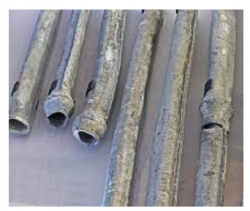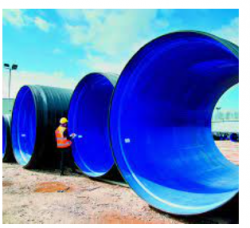Since the dawn of time, human beings have realised that access to food and water is essential for a community to thrive and survive. Above all else, the supply of fresh, clean water is paramount. As a result, it is no surprise that most countries find their capital and major cities are all located around rivers or ports at the mouth of watercourses. The channelling of the water to these cities and its distribution around the city using it has presented problems that the ancient civilisations soon found answers for. What materials have we humans used down through the centuries to control this vital resource? Modern living uses Copper Pipe Connectors, like those from //watkinspowis.co.uk/products/copper-pipe-fittings-and-press-systems/, to make sure that we get clean water straight away and without leaks. We shall cover copper in more detail later.
- Stone and Clay. The first materials used to channel water into cities are evidenced by the carved stone troughs and baked clay connectors of the Indus Valley civilisation. They are some of the first to create these deliberate channels via gravity-fed systems in the city. These fuel public collection points and, in some cases, for the leadership, direct supply. Public toilets, where the waste is taken away by the flowing river, are also in evidence. Although this is ingenious, it appears that, for the most part, these troughs were uncovered, so the water may have been a little tainted. Dust from the stone and clay would have contributed to that, but, in terms of water supply, it was a quantum leap at the time.
- Lead. being easy to mould and manipulate, provides the dream solution to the Roman Empire. With the development of lead piping, the supply of water can be more direct and reach areas that were considered too difficult to reach. Strong and adaptable, the Romans used lead piping to great effect. The Latin word for Lead is Plumbum, and it’s where we get our word plumbing from. Installers of lead pipes were considered to be master artisans, and their work was highly valued and praised. Whilst lead seems like a good idea, if it cracks and splits and gets into the water supply, it can cause major health issues. The increase in Lead poisoning was a surefire indicator that the pipes leading into a fountain or public water access site were broken and would need to be replaced.
- Wood. Wood has been used to direct water, but its porous nature means that a fair bit is lost. It was used primarily in industry systems like mining to direct water to clean up finds or to power machinery.
- Copper. Copper is perfect for the transference of water as it is the best metal resistant to rusting and corrosion.
- Plastic. Tougher polymers mean that the thick plastic tubing is used almost universally for large scale water transference.


